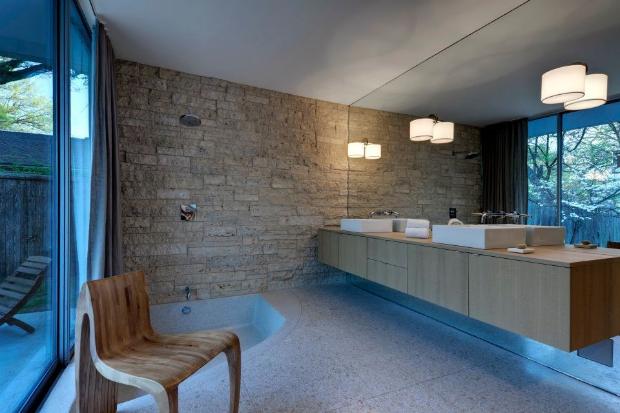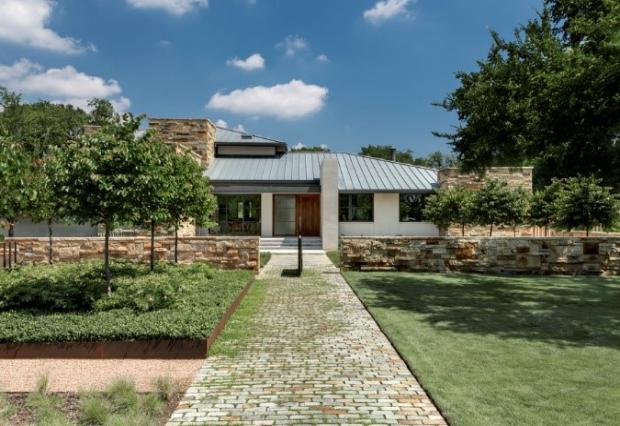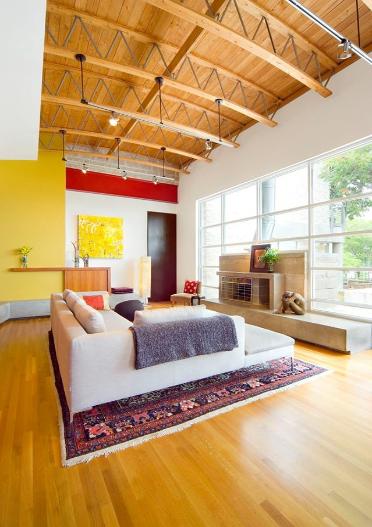HIRING AN ARCHITECT
by Georgina Callan
It is the dream of many people to design their own home. The reality of this dream is that it involves multiple decisions, includes many people, an amount of money that may exceed the original budget, and a great deal of time. Building a home of one’s own may also be one of the most fulfilling, challenging, inspiring and satisfying projects undertaken in life. Building or creating anything, a company, a business, even an event, requires the establishment of healthy relationships and the maintenance of sinuous ongoing collaboration and heightened communication. Whatever stimulates the first steps in building a home of one’s own, whether that is a need for more space, frustration at being unable to locate relevant housing, or a desire to express a personal manner in which to live within a defined framework of style, in other words, lifestyle, help is needed for execution and completion. The same holds true if you are anticipating an extensive renovation to an existing structure. It will be the job of an architecture to unite an expanded footprint to a home that was built some years ago, or to create a compatible and functional environment within the walls of the home that already stands, while respecting the original architecture. New build from the ground up or renovation, it all starts with sharing a vision, even if the vision is incomplete at commencement. For a new house, the process is often initiated by the availability of a tract of land, in a particular neighborhood or environment. For renovation, the owners and occupants of a home may find that they are happy and settled within a neighborhood and community but would like to change the interior structure of their environment, the layout of the rooms, or expand the kitchen or bathroom areas.

The same holds true if you are anticipating an extensive renovation to an existing structure. It will be the job of an architecture to unite an expanded footprint to a home that was built some years ago, or to create a compatible and functional environment within the walls of the home that already stands, while respecting the original architecture.
New build from the ground up or renovation, it all starts with sharing a vision, even if the vision is incomplete at commencement.
For a new house, the process is often initiated by the availability of a tract of land, in a particular neighborhood or environment. For renovation, the owners and occupants of a home may find that they are happy and settled within a neighborhood and community but would like to change the interior structure of their environment, the layout of the rooms, or expand the kitchen or bathroom areas.
From either point an architect is sought out, and here is where the foundations of all future relationships of the new home, or remodel, processes commence, and to a great extent, influence the outcome.
Find the right architect, be responsible in holding everyone accountable, including oneself, the client, and the construction project is far more likely to have a better outcome.
In many instances, people have found it worthwhile to engage an architect prior to starting out on hunt for land. This is because an architect is able to help in evaluating the land itself, the aspect and position in which the house may have to sit due to neighborhood requirements, the amount of work needed to be done to prepare or clear the land, in short, things a homeowner may not have considered.
From whatever direction is the starting point, in terms of locating an architect, it is a good idea to ask for referrals from friends and acquaintances. While websites hold narratives of an architect’s work, they are illustrative, and cannot replace a conversation. Not every architect’s website is fully up to date; their best work may be on their drawing boards, or under construction.
Social media provides combs with which to search architectural styles on line and many a client is readily armed with hundreds of “tear” sheets from magazines, and print outs from publications, of design and architectural aspects that he or she favors. While this may be helpful, any subsequent design would be nothing more than an amalgamation of ideas. An architect is trained to see a larger picture than a photogenic staircase, an interesting floor tile pattern, a stellar built-in closet, a hobbyist’s garage or a modular kitchen. He or she sees the environment as a whole, the land, the structure, both external and internal, and must be concerned with the functionality of the home as well as the design aesthetic.
But this does not sit all on the architect’s shoulders.

Ask yourself what sort of client would you be? Easy going, or exacting and detailed. How involved would you be in the process? The honest answer to this will help you select an architect.
One way to determine a good fit for you is to be prepared when talking to an architect. If this is a partnership, do both partners in the process agree on the material content of the home, the number of functionality of the rooms? Are you able to articulate your needs, wants and ideas or is it more a case of “I’ll know I like when I see it”?
There are practical issues to address with an architect. Timing of construction is one. Clients are often extremely eager to see the process completed, particularly in a renovation where a considerable amount of upheaval at the residence that may disrupt everyday life. The timeline for new construction and renovation is often longer than anticipated, and it is only frustrating to everyone to expect anything different. Holdups and delays are usual in construction, many caused by rain or snow, others created by sub-contractors who are late finishing up on one job before starting your project. This is often beyond anyone’s control. Talk with an architect about the potential for delays, a realistic timeline and most important of all, the timeline of the architect as it is his or her office that must produce the initial and ongoing construction drawings, once the design has been approved, from which your builder will be able to acquire bids from various sub-contractors.
An architect, especially if you have hired one in the same city in which you live, may also be able to assist in connecting you with builders to interview, and while in some instances, the architect may also act as interior designer, with a decorator in a supporting role, in others an interior designer may be included and the selection of an interior design professional at the beginning rather than mid-way through the project is recommended for everyone.
The American Institute of Architects has created a useful document that addresses how the design process works. (howdesignworks)
And another document focused on 20 Questions to Ask Your Architect
https://howdesignworks.aia.org/pdf/Twenty-Questions-to-Ask-Your-Architect.pdf
If you talk to people who are engaged in the process of designing and building homes, you will hear the words “it takes time” a great deal. So the allocation of time here is key:
• Time to identify the right architect, undertake the interview process, and, if necessary, await a timeslot on an architect’s schedule. This may include touring existing client’s homes, if architect and client are willing, or attending home tours to identify an architect in the initial phase.
• Time to interview builders and obtain references. Most good builders are busy and it may be necessary to wait in line for a commencement date.
• Time to locate and identify an interior designer whose work is in alignment with your tastes and budget but significantly supports and enhances the architectural environment.
Once you have determined your budget and the team is assembled, contracts drawn up, and here again there are templated documents at www.aia.org, the architect will begin to create your home or undertake drawings for renovation. He or she will do so with the budget in mind but matching dreams and the reality of costs, may necessitate alterations to the design of the home.
In the interview process with the architect you will have obtained an idea of the length of time (that word again) that the architect and his/her office will need to create a design of your home. It is important to find out if you will see sketches and drawings, and, because not everyone is able to read plans and elevations easily, it may be worth having a model made, for an additional cost, to allow you to explore the rooms.
To a certain extent you are in control of the time factor here, in how quickly you are able to respond to drawings and sketches and what will be the first of numerous decisions that will have to be made in regard to the new project. This is true throughout the entire process. If the builder has to wait while you decide on a certain type of fixture this may hold up other aspects of the job.
In the interview process it is important to establish if you are hiring your architect to be an ongoing part of your team, beyond the submission and acceptance of architectural plans and drawings. If so, he or she will be able to work with your builder to mutually advance the progress with a defined end goal and be at your side for consultation and advice.




